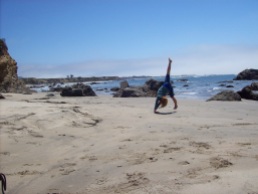In response to The Daily Post’s writing prompt: “The Happy Wanderer.”
I’m a planner. I admit it. But whether or not my children believe me, I wasn’t always one. When I traveled to Ensenada, I let my friend plan our weekend. When I traveled to San Felipe, I went with the flow. On my trip to Australia, we were free and spontaneous. We chose where to stay and for how long, money and a flight home our only boundaries. Even my first trip to Paris and Zurich were simple – I stayed with friends, brought guide books, and decided each day where I would be a tourist.
But then I had children. And the world became more crowded. I discovered that summer camps would fill up before spring. With a child with food allergies, spontaneity was difficult and wrought with disappointment and a hungry child. Slowly, I learned to plan. And now, I always plan.
My hesitation and anxiety about traveling to South Africa was lessened by learning more about the country, where we could and would go. Planning has allowed me to avoid long lines and eat gluten free at Disney, visit our sponsored child in Lesotho, camp at Pawtuckaway State Park every summer for years, be led by a tour guide through Gettysburg National Park, and visit the Senate on a trip to Washington.
But I still love spontaneity. And while doing a little research before traveling to a new place helps me to find the special and unique, or avoid those well traveled and touristy, destinations, spontaneity allows us to change course. To listen to recommendations from other travelers or discover new places ourselves.
Without spontaneity, I wouldn’t have attended a hearing for Supreme Court Justice Elena Kagan, watched the surfers in Half Moon Bay, or listened to the Wave Organ in San Francisco. I wouldn’t have spent the night in a treehouse, picked strawberries in Pescadero, gone hiking with the Hobart Bushwalking Club, or danced Nia in Santa Barbara. Without spontaneity, I wouldn’t have met Terry from England who later invited me to her wedding in Athens. I wouldn’t have stayed with the dairy farmer in Auckland or gone hot air ballooning outside of Alice Springs.
The travel world is so different than it was – the internet provides information and access to so many places, and apps like Yelp can allow a little bit of spontaneity with less risk of disappointment. You can read about where to go and what to see on blogs and share your experiences on social media.
But there’s nothing quite as freeing as just setting out, doing what you feel like doing at the moment, eating when you’re hungry, and being ready to just let things happen.




























